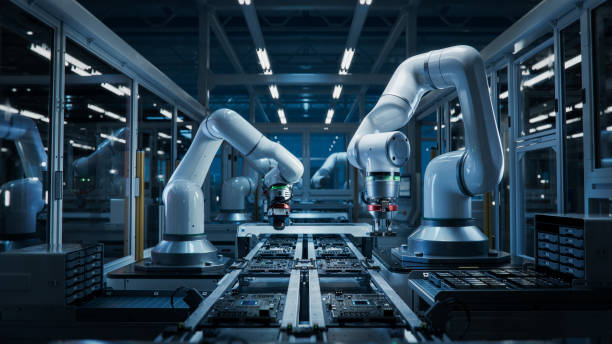In recent years, robotics has played a pivotal role in transforming the consumer electronics industry. From enhancing precision in manufacturing to creating innovative products, the integration of robotics has revolutionized the sector in myriad ways. This article explores the multifaceted role of robotics in consumer electronics and delves into how it is shaping the future of the industry.
Enhancing Manufacturing Precision

One of the primary ways robotics has impacted consumer electronics is through enhancing manufacturing precision. Robots can execute tasks with unmatched accuracy and consistency, reducing the margin for human error. This precision is pivotal in producing high-quality electronic devices, where even the slightest flaw can result in a defective product. Additionally, robots can work tirelessly around the clock, increasing production efficiency and reducing costs associated with human labor.
Innovative Product Development
The integration of robotics has paved the way for innovative product development in consumer electronics. For instance, advanced robotics technologies have enabled the creation of smart devices like robotic vacuum cleaners, intelligent assistants, and wearable health monitors. These products not only enhance the consumer experience but also provide functionalities that were once thought impossible. The seamless incorporation of robotics in these devices demonstrates the endless potential for innovation in the industry.
Improving Quality Control and Testing
Robotics also plays a crucial role in improving quality control and testing of consumer electronics. Automated systems can perform rigorous quality checks and tests at various stages of production, ensuring that each product meets the highest standards. Robots equipped with advanced sensors and machine learning algorithms can detect inconsistencies and defects much more effectively than human inspectors. This results in higher-quality products reaching the market, ultimately benefiting consumers.
Revolutionizing Supply Chain Management
Robotics has significantly enhanced supply chain management within the consumer electronics sector. Automated guided vehicles (AGVs) and drones are now being used to transport materials and products within factories and warehouses, streamlining operations. These robots help in reducing delivery times and optimizing inventory management, ensuring that consumer electronics reach the market faster and more efficiently. Additionally, robotics contributes to more sustainable practices by minimizing waste and lowering the carbon footprint of manufacturing processes.
Elevating Customer Service
Customer service in the consumer electronics industry has also benefited from the implementation of robotics. Robots and AI-powered chatbots provide instant support, answering customer queries and troubleshooting issues around the clock. This not only enhances customer satisfaction but also allows human representatives to focus on more complex issues. Additionally, the use of robotics in after-sales services, such as automated repair and maintenance, ensures quicker turnaround times and improved reliability of service.
Conclusion
In conclusion, robotics has fundamentally transformed the consumer electronics industry by driving innovation, enhancing manufacturing precision, improving quality control, revolutionizing supply chain management, and elevating customer service. As technology continues to advance, the role of robotics in consumer electronics is likely to expand even further, offering new possibilities and creating more sophisticated and efficient products for consumers worldwide.
FAQ
What are some examples of robotics in consumer electronics?
Examples include robotic vacuum cleaners, intelligent personal assistants, and wearable health monitors. These devices utilize advanced robotics technology to provide enhanced functionalities and improve user experience.
How does robotics improve manufacturing precision?
Robots can perform tasks with a high degree of accuracy and consistency, reducing human error and ensuring high-quality production. They can operate continuously, which boosts production efficiency and lowers costs.
What is the role of robotics in quality control?
Robotics systems are used for rigorous quality checks and testing at various production stages. Equipped with advanced sensors and machine learning algorithms, they can detect flaws and ensure that only high-quality products reach the market.
How do robotics impact supply chain management in consumer electronics?
Robotics, such as AGVs and drones, streamline operations by transporting materials and products efficiently within factories and warehouses. This optimizes delivery times, aids in inventory management, and promotes more sustainable practices by reducing waste.
Can robotics improve customer service in the consumer electronics industry?
Yes, robotics and AI-powered chatbots provide instant support and address customer issues around the clock, leading to higher customer satisfaction. Additionally, automated repair and maintenance services ensure quicker service resolution.



